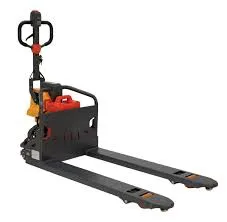


Understanding the Types of Fall Protection Ensuring Safety in the Workplace
Fall protection is a critical component of workplace safety, especially in industries where employees work at heights. Whether on construction sites, in warehouses, or even in offices, the risk of falls is a serious concern that can lead to severe injuries or fatalities. Since falls are one of the leading causes of workplace accidents, understanding the various types of fall protection is essential for employers and workers alike. This article will explore the different types of fall protection systems, their applications, and the importance of implementing them effectively.
1. Personal Fall Arrest Systems (PFAS)
Personal Fall Arrest Systems are designed to protect individual workers in the event of a fall. These systems typically include a full-body harness, lanyards, and anchor points. The harness distributes the fall force across the body, reducing the likelihood of injury. Lanyards attach the harness to a secure anchor point, and it is essential that these anchors can withstand the forces exerted during a fall. PFAS are commonly used in construction, roofing, and maintenance work, where workers are often exposed to potential falls from heights.
2. Guardrails
Guardrails are a passive form of fall protection that are installed around elevated work areas, such as roofs, scaffolding, or open-sided floors. They consist of a top rail, mid rail, and toe board, creating a physical barrier that prevents workers from falling. Unlike PFAS, guardrails do not require personal equipment or action by the worker to be effective. They are typically made from durable materials like steel or aluminum and must adhere to specific height and strength standards to ensure maximum protection.
3. Safety Nets
Safety nets are another form of passive fall protection. Installed below elevated work areas, safety nets capture falling workers and debris, preventing serious injuries. They are particularly useful in situations where guardrails cannot be installed, or where the risk of falls is high, such as in construction or during large-scale renovation projects. Safety nets must be tested and maintained regularly to ensure they are functioning correctly and can support the weight of a falling person.

4. Positioning Systems
Positioning systems allow workers to be supported on an elevated vertical surface while keeping their hands free for work. These systems usually involve a combination of body belts and straps that secure the worker to a stable structure. While they do not prevent falls entirely, they help workers stabilize themselves when working at heights. Positioning systems are commonly used in scenarios such as tree trimming, window washing, and maintenance tasks on tall structures.
5. Warning Line Systems
Warning line systems are intended to alert workers to the presence of a fall hazard. They typically consist of a series of ropes or chains placed at a specific distance from an unprotected edge. These lines serve as a visual warning and help to keep workers at a safe distance from the edge. While they do not prevent falls, warning line systems can be an effective supplementary measure in tandem with other types of fall protection.
6. Training and Education
While having the right fall protection systems in place is vital, it is equally important to invest in training and education for employees. Proper training ensures that workers understand how to use fall protection equipment, recognize fall hazards, and implement safe work practices. Regular safety meetings and drills can reinforce these principles, creating a culture of safety within the workplace.
Conclusion
The types of fall protection systems available highlight the importance of safeguarding workers from the dangers of falls in the workplace. From Personal Fall Arrest Systems to guardrails, safety nets, and positioning systems, each method offers its own advantages depending on the specific situation. However, the effectiveness of these systems relies heavily on proper implementation, maintenance, and comprehensive training. By prioritizing fall protection, employers can create safer work environments, ultimately saving lives and reducing the burden of workplace injuries. Investing in these safety measures is not just a regulatory requirement; it is a moral obligation to protect the well-being of every worker.



